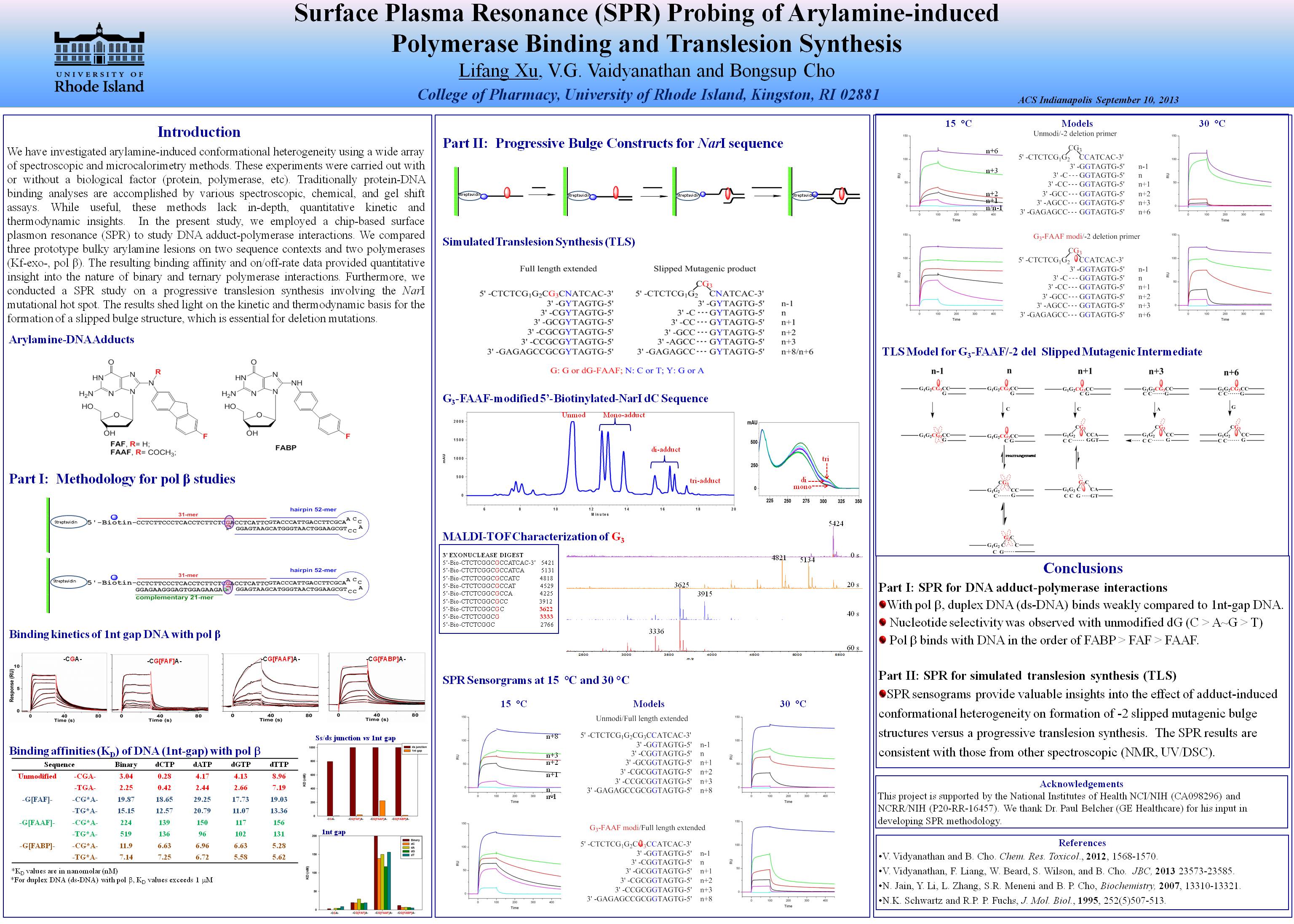- Presented at the 246th ACS National Meeting, September 2013
- Lifang Xu, V.G. Vaidyanathan and Bongsup Cho
Research
We have investigated arylamine-induced conformational heterogeneity using a wide array of spectroscopic and microcalorimetry methods. These experiments were carried out with or without a biological factor (protein, polymerase, etc). Traditionally protein-DNA binding analyses are accomplished by various spectroscopic, chemical, and gel shift assays. While useful, these methods lack in-depth, quantitative kinetic and thermodynamic insights. In the present study, we employed a chip-based surface plasmon resonance (SPR) to study DNA adduct-polymerase interactions. We compared three prototype bulky arylamine lesions on two sequence contexts and two polymerases (Kf-exo-, pol β). The resulting binding affinity and on/off-rate data provided quantitative insight into the nature of binary and ternary polymerase interactions. Furthermore, we conducted a SPR study on a progressive translesion synthesis involving the NarI mutational hot spot. The results shed light on the kinetic and thermodynamic basis for the formation of a slipped bulge structure, which is essential for deletion mutations.
Related People: Lifang Xu and Bongsup Cho
College of Pharmacy, University of Rhode Island, Kingston, RI 02881

